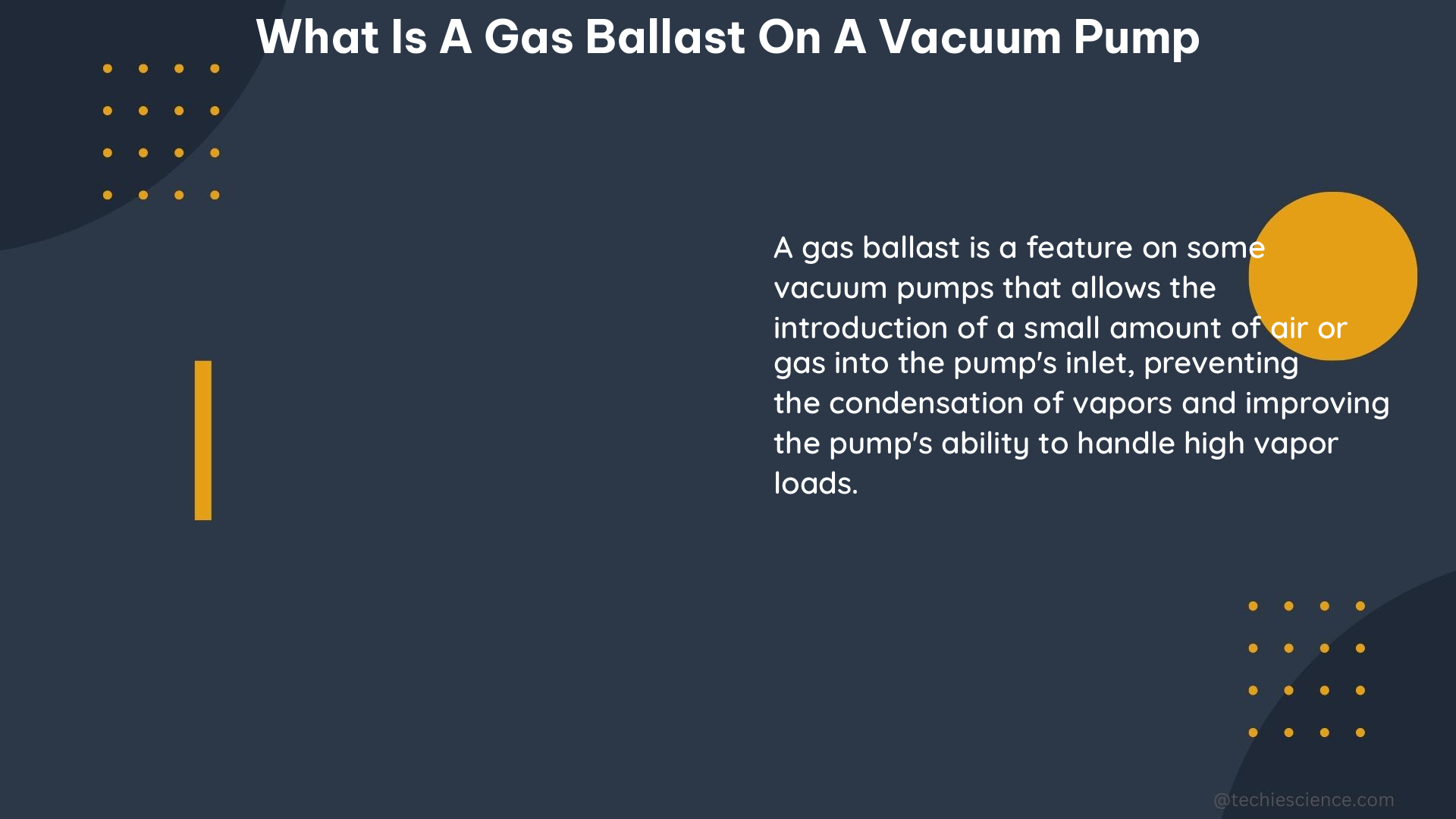A gas ballast on a vacuum pump is a feature that introduces a controlled amount of air or another gas into the pump, which helps to prevent the condensation of vapors and reduce contamination of the pump’s sealing oil. This is particularly useful when pumping gases that would naturally condense in the pump, as it allows the condensable vapor to discharge to the atmosphere in its gas phase before it can contaminate the system.
Understanding the Technical Specifications of a Gas Ballast
The technical specifications of a gas ballast on a vacuum pump can vary depending on the manufacturer and model. However, some key measurable and quantifiable data points include:
Gas Ballast Flow Rate
The gas ballast flow rate is the volume of air or gas that is introduced into the pump through the gas ballast valve. It is typically measured in liters per minute (L/min) or standard cubic centimeters per minute (sccm). This parameter is crucial in determining the pump’s ability to handle different types of gases and vapors.
For example, the Leybold DV 612 vacuum pump has a gas ballast flow rate of up to 150 L/min, which allows it to effectively handle a wide range of condensable vapors.
Running Temperature of the Pump
The running temperature of the pump when the gas ballast is in use can also be an important specification. This is because the temperature can affect the viscosity of the oil and the rate of vapor condensation. Higher temperatures can help to keep the oil less viscous, which can improve the pump’s efficiency and reduce the risk of oil contamination.
The Leybold DV 612 vacuum pump, for example, has a running temperature of up to 100°C when the gas ballast is in use.
Exhaust Valve Pressure
The pressure at which the exhaust valve of the pump opens can also be affected by the gas ballast. This is because the additional gas introduced into the pump can help to reduce the pressure buildup inside the pump, which in turn can help to prevent the exhaust valve from opening prematurely.
For the Leybold DV 612 vacuum pump, the exhaust valve pressure is 0.5 bar.
Maximum Water Vapor Handling Capacity
This specification is particularly important for pumps that are used in wet processes. It is typically measured in grams (or ounces) of water per hour and indicates the maximum amount of water vapor that the pump can handle without risking oil contamination or pump damage.
The Leybold DV 612 vacuum pump, for example, can handle a maximum water vapor load of 20 g/h.
Operating the Gas Ballast: A DIY Perspective

From a DIY perspective, it’s important to follow the manufacturer’s instructions for operating the gas ballast valve on your specific vacuum pump model. This typically involves:
- Opening the gas ballast valve during the initial pull-down phase of the evacuation process. This helps to prevent the condensation of vapors and reduce the risk of oil contamination.
- Closing the gas ballast valve once the system has reached a deep vacuum. This helps to maintain the pump’s efficiency and performance.
It’s also important to monitor the pump’s performance and oil condition regularly to ensure that the gas ballast is being used effectively. This may involve checking the pump’s running temperature, exhaust valve pressure, and the condition of the sealing oil.
By understanding the technical specifications and proper operation of the gas ballast, you can ensure that your vacuum pump is performing at its best and providing reliable service for your DIY projects.
References:
- How Does a Gas Ballast Work?
- Gas Ballasting: What It Is and Why It’s Important
- Why Gas Ballast is Important on Oil-Sealed Rotary Vane Pumps
- What is the Gas Ballast and When Do I Use It?

The lambdageeks.com Core SME Team is a group of experienced subject matter experts from diverse scientific and technical fields including Physics, Chemistry, Technology,Electronics & Electrical Engineering, Automotive, Mechanical Engineering. Our team collaborates to create high-quality, well-researched articles on a wide range of science and technology topics for the lambdageeks.com website.
All Our Senior SME are having more than 7 Years of experience in the respective fields . They are either Working Industry Professionals or assocaited With different Universities. Refer Our Authors Page to get to know About our Core SMEs.